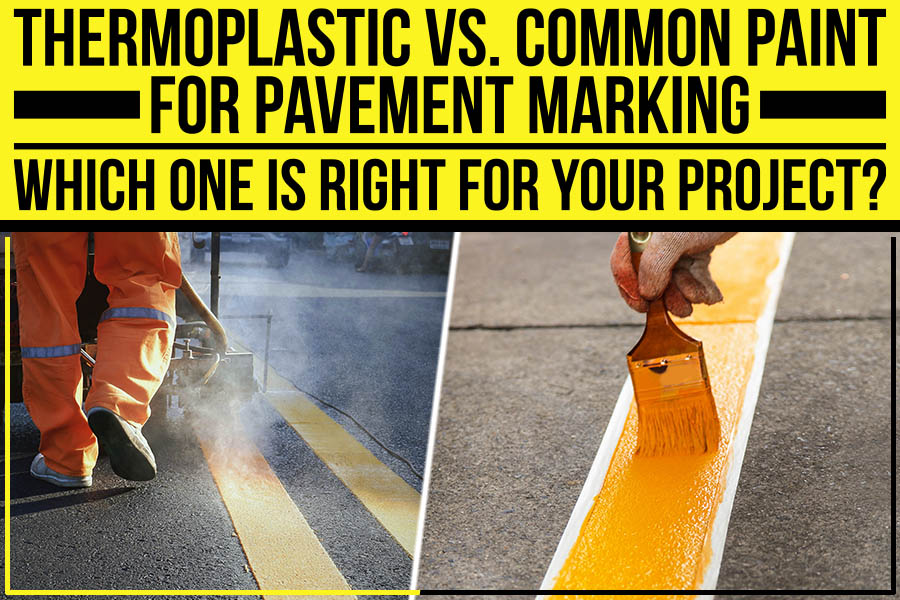People don’t give much thought to the pavement markings on the roadways and parking lots they use daily. But, without these markings, it would be difficult to know where to park, which lanes to use, and when to yield. In short, pavement markings are essential for keeping drivers and pedestrians safe.
There are two main types of pavement marking materials: thermoplastic and paint. Both have their advantages and disadvantages, so in this blog, Standard Striping will take you on a journey of discovering which one is best for your project.
What Is Thermoplastic, And How Does It Differ from Regular Paint?
Thermoplastic pavement markings are made with a polymer that becomes soft and pliable when heated to approximately 400 degrees Fahrenheit. Thermoplastic creates a durable bond with the surface once you apply it to the pavement and it cools. It is commonly used for crosswalks, stop bars, and other high-visibility markings.
On the other hand, paint is a water-based product or emulsion that dries when exposed to air. It sticks to the surface through a chemical reaction between the paint and the pavement.
Benefits of Thermoplastic
- Thermoplastic can last up to eight times longer than paint and is resistant to fading, chipping, peeling, and cracking.
- It can withstand heavy traffic and weather conditions such as rain, snow, and ice making it a durable choice over paint and other striping options.
- Thermoplastic is also more reflective than paint, making it easier for drivers to see at night and in inclement weather.
- Applying thermoplastic is a faster process than painting; the material can be melted and reapplied multiple times.
- Thermoplastics do not require curing time, so traffic can resume using the road almost immediately after the material is applied.
Benefits of Paint
- Paint is more affordable than thermoplastic and can be applied to a broader range of surfaces.
- It is easier to repair than thermoplastic; if a section of paint is damaged, it can simply be patched without replacing the entire coating.
- Paint dries quickly and does not require specialized equipment for application.
- Paint can be removed more easily than thermoplastic, making it a good choice for temporary markings.
The Verdict:
Where paint as a striping option may entice you to save money, road paint is not a place to cut costs. Pavement markings and striping must be done right first, as it can be difficult and costly to repair or replace poor-quality paint jobs. While paint may have advantages over thermoplastic, we recommend sticking with tried-and-true thermoplastic for your next pavement markings project.
If you’re looking for top-tier thermoplastic road marking services in Waldorf, MD, look no further than Standard Striping. Our experienced professionals have been in the business for over 24 years and know how to get the job done right.
Contact us today for a free estimate!





